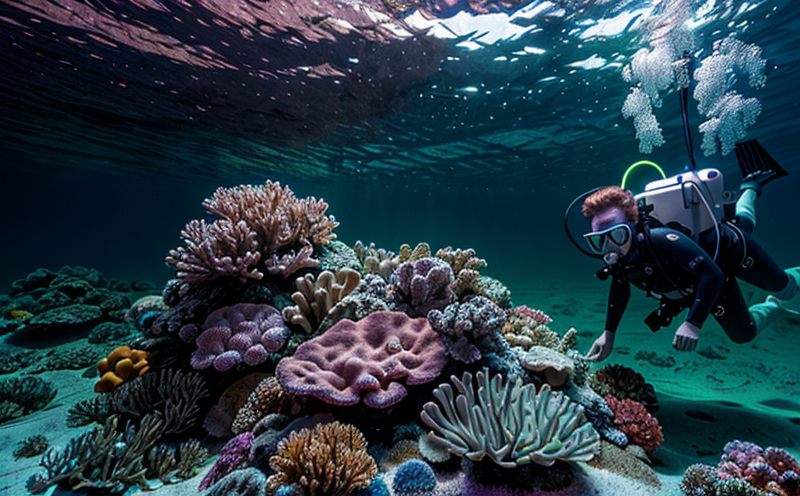ISO 4892 Accelerated Weathering Testing of Marine Lighting Materials
The ISO 4892-3 standard outlines accelerated weathering tests for the evaluation of the resistance of materials to natural exposure. This protocol is particularly important in ensuring that marine lighting fixtures remain functional and safe under harsh environmental conditions over prolonged periods.
Lighting systems installed in maritime environments face a unique set of challenges, including high humidity levels, salt spray, UV radiation, and extreme temperatures. To ensure the longevity and reliability of these systems, ISO 4892-3 provides a standardized method to simulate these environmental stresses using accelerated weathering tests.
The testing process involves exposing marine-grade lighting materials to controlled conditions that mimic real-world exposure more rapidly than would occur under normal circumstances. This approach helps manufacturers identify potential weaknesses in their products early in the development cycle, thereby improving product durability and reliability.
During an ISO 4892-3 test, specimens are typically exposed to UV radiation combined with humidity cycling or salt fog exposure. The duration of this exposure can vary depending on the specific requirements outlined by the manufacturer or regulatory bodies like IEEE, IEC, or ASME. It is crucial that these tests adhere strictly to international standards such as ISO 4892-3 to ensure consistent and reliable results.
Preparation of specimens for testing involves several steps. Specimens must be cut to standard dimensions specified by the test method (ISO 4892-3), ensuring uniformity across all samples being tested. Samples are then conditioned in controlled environmental chambers according to prescribed temperature and humidity levels before exposure to UV radiation.
The apparatus used for conducting these tests includes specialized equipment capable of generating high-intensity UV light, humidity control systems, and salt fog generators if necessary. The intensity and duration of the UV exposure can be adjusted based on the specific properties being evaluated (e.g., color change, surface roughness). Monitoring devices measure key parameters during testing to ensure accurate data collection.
After completing the accelerated weathering cycle, samples are visually inspected for any signs of degradation such as discoloration, chalking, cracking, or loss of gloss. Additional mechanical tests may also be performed if there is concern about structural integrity after exposure.
- Visual Inspection: Evaluates the appearance changes due to weathering
- Color Change Test: Measures any alterations in color caused by UV radiation
- Surface Roughness Measurement: Determines changes in surface texture resulting from environmental exposure
The results of these tests provide valuable insights into how well a given material will perform under marine conditions. By identifying early signs of degradation, manufacturers can make necessary adjustments to their product design or formulation before mass production begins.
Benefits
The primary benefit of performing ISO 4892-3 accelerated weathering tests on marine lighting materials is the ability to predict long-term performance accurately. This allows manufacturers to optimize their product designs, ensuring that they meet or exceed all relevant standards and regulations.
By identifying potential issues early in the development process, companies can avoid costly rework or recall campaigns later down the line. Furthermore, successful completion of these tests demonstrates compliance with international standards such as those set by IEEE, IEC, ASME, etc., which enhances trust among customers and stakeholders.
Testing also supports sustainable manufacturing practices by promoting the use of environmentally friendly materials that can withstand harsh marine environments without compromising safety or functionality. This aligns well with growing global trends towards eco-friendly solutions across various industries.
Customer Impact and Satisfaction
- Improved Product Quality: Customers receive products that meet rigorous quality standards, enhancing overall satisfaction levels.
- Increased Trust: Compliance with international standards builds confidence among clients regarding the reliability of purchased goods.
- Eco-Friendly Solutions: Environmental consciousness is becoming increasingly important to consumers; offering sustainable products contributes positively towards brand image and reputation.
Competitive Advantage and Market Impact
Implementing ISO 4892-3 accelerated weathering tests can give businesses a significant competitive edge in the market. Early detection of material weaknesses allows companies to innovate quickly, leading to superior product offerings compared to competitors who may not follow such stringent testing protocols.
Companies that invest in comprehensive testing programs are better positioned to attract and retain high-quality clients looking for reliable partners committed to excellence. Additionally, successful compliance with international standards can open doors to new markets and opportunities globally.





